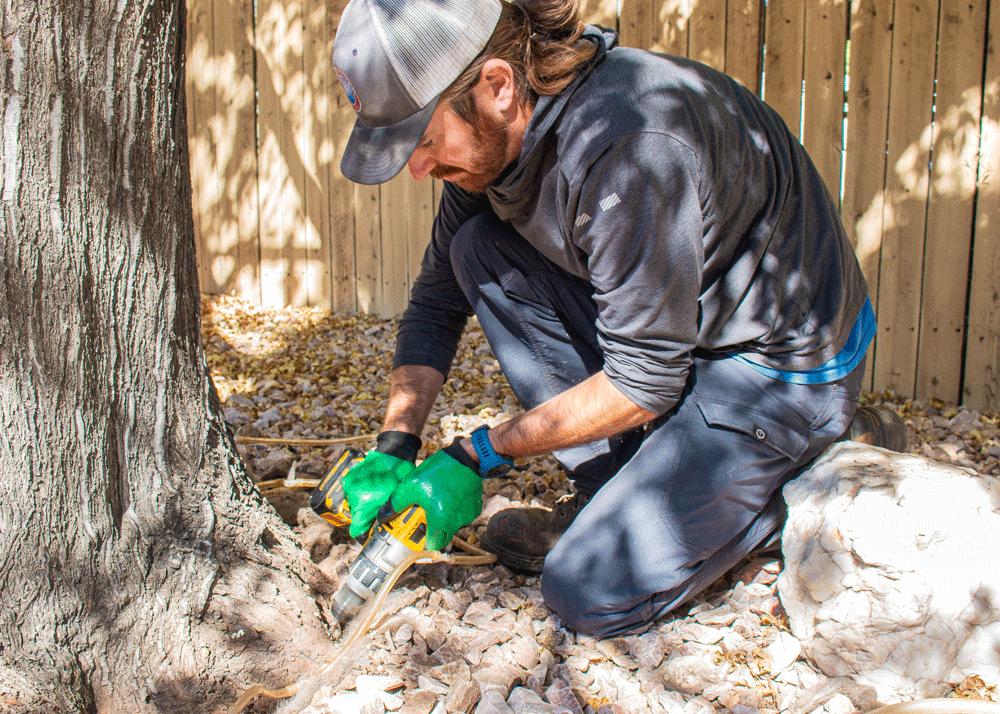
When managing tree health, the best solutions are not only effective, but also limit negative impacts to the surrounding environment. If you have a favorite tree that is experiencing an issue, we can help diagnose the problem and give you recommendations on how to manage it. We offer proven Plant Health Care services, backed by science, to help your trees deal with the common insect, disease, and abiotic disorders that affect our Front Range tree species.
All tree health management services will have varied levels of success. Variables that affect the success of treatments include the condition of the tree at the time of treatment, method of application, timing of the application, chemical used, and environmental conditions at the time of application. Some treatments, such as trunk injections to control Emerald ash borer, are highly effective when done properly.
You can trust that our Certified Arborists will be honest with you about what options make the most sense for you and your trees. Many times, the best solutions for these problems is simply to improve overall tree health through appropriate watering, fertilization, and/or pruning. These cultural practices can boost the tree’s overall vigor, so that it can deal with these untreatable issues through its own processes of compartmentalization and response to disease and decay fungi.
 Trunk Injection Treatments
Trunk Injection TreatmentsOne of the most significant advances in tree care technology over the past 30 years has been the development of systems that deliver pesticides and fertilizers directly into the tree without the need to spray chemicals into the air or put them into the soil. Today, trunk injection can be performed several different ways with several different systems available for commercial use.
There are pros and cons to the different methods of trunk injection, and we have experimented with several over the past 10 years. Currently we are set on using Rainbow TreeCare’s Q Connect system for microinjections (to treat for Emerald ash borer, fire blight, ect.) and their manual macroinjection system (to treat chlorosis symptoms). These systems do not involve the use of plastic plugs, deliver product quickly to the tree, and cause the least amount of damage to the tree at the injection sites. Not having to spray pesticides into the air or put them in the ground makes for an application that has the least environmental impact while being incredibly effective at putting the chemical right where it needs to be to protect your trees.
There are certain insect pest problems for trees that are best treated with either a tree spray or soil injection application. Examples of pests that we currently spray for include Lilac ash borer, Ips bark beetles, Zimmerman pine moth, European elm scale, and Kermes scale. Scale treatment sprays are always recommended in conjunction with a soil or trunk applied systemic, as they can be very difficult to control by spraying only. Soil injection treatments are primarily used to treat trees that are too small to have a trunk injection performed, which in most cases are trees less than 8” in diameter. This is an effective way to treat ash trees for Emerald ash borer that are too small to drill into for a trunk injection.
Generally speaking, our Colorado soils and climate make it tough to be a tree. Depending on your specific location the soil on your property may be very alkaline (high pH), it might have a very high clay content (doesn’t drain properly), and it may be highly compacted by foot, vehicle, or construction traffic. Our tree fertilization treatments are geared towards helping alleviate specific tree issues that result from poor soil conditions and harsh climate, such as chlorotic foliage or root damage.
These trees tend to develop a condition called interveinal chlorosis, which is a yellowing of the leaves due to a lack of specific nutrients needed to produce chlorophyll. By treating these trees with a fertilizer solution high in iron, manganese, and zinc, we can help correct the imbalance and bring the tree back to health. If you have a yellowing Autumn Blaze maple or red oak on your property, give us a call so that we can help develop a plan for that tree.
If your current tree service is recommending that you fertilize your honey locust with a high nitrogen solution, you may want to consider a different service, as honey locust roots harbor nitrogen-fixing bacteria that produce all the nitrogen the tree will ever need. The point is that knowledge of specific trees and site conditions is important when making fertilization recommendations, don’t just trust the lawn guy when he says your trees will benefit from fertilization.
Not sure what’s in your soil? That makes sense, as you can’t just look at it and diagnose nutrient or pH imbalances. That’s what soil testing is for. We can take samples from your property and have them tested by the good folks at Colorado State University soil testing lab. With that information we can make informed recommendations as to what your trees are in need of, so that you are not wasting money on tree fertilization that is not necessary or helpful to your trees.

Copyright © Patriot Tree Company 2023 | All Rights Reserved | Firefly Web Studio